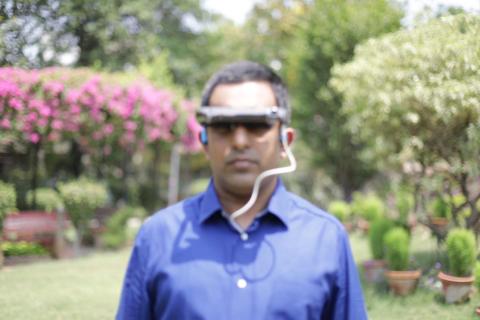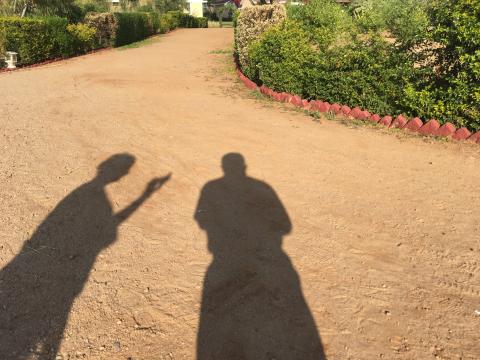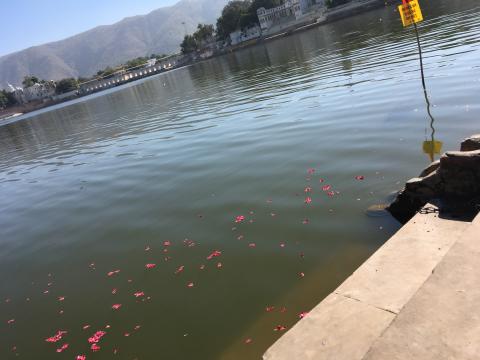
Meet Pranav Lal, a self-taught programmer and an avid photographer with congenital blindness, who uses the vOICe, a computer software that works on the system of a vision to sound map, to commune with nature and sharing that joy with the rest of the world.
Could you give us a little background about yourself?
I am Pranav Lal. I am congenitally blind due to retinopathy of prematurity. Technology has played a big role in getting me where I am today. I keep exploring and experimenting a lot. I am a self-taught programmer and work in cyber security.
What about your journey into photography – how did it begin?
I read about the vOICe, a computer program that could give me a form of sight, several years ago. I wanted to do something visual to play with this new sense I had. In addition, I learnt vision by asking questions. The best way I found to ask questions about scenes was to take a photo and then ask about it. That is how photography began.
Describe the process of capturing images. Do you have any special techniques or equipment?
My process is like that of other photographers. I frame the shot using the data given to me by the vOICe and then click. Background and shape complexity matters. One key difference is that I do not consider colour but do account for contrast. This is because as of this writing, the vOICe does not give an experiential way to perceive colour. I do, however, work a lot with lights and shadows and how objects are placed in their environment. As for special equipment, I am wearing the vOICe which these days is installed on the vision 800 glasses. I also use bone conduction headphones that allow me to hear the soundscapes while also listening to environmental sounds. When I spot an object of interest, I frame the object in the centre of the view, and then decide on how much of the background I want, or do I want a close up. Once I do that, I take my mobile phone to the same position as the camera on the video glasses such that my hand is in front of the camera on the glasses. This gives the phone camera the same alignment as that of the glasses. I then activate the control on the phone to take the picture. The key thing here is to understand how the vOICe works. It bypasses the entire visual system and goes directly to the brain. The live camera view is converted to sound that has a defined representation.
- The panning of the sound shows me where an object is in the horizontal plane. If I hear a sound towards my right, I know that the object is in the right of the camera view.
- The pitch of the sound represents the height of an object. The higher the sound, the taller the object in the camera view.
- The volume of the sound represents brightness such that the louder the sound the brighter the object.
My job is to synthesize the input given by the sound and to then construct a mental model of the scene in front of my eye. This takes some practice but is easier than it looks when you read the above paragraphs.
How did you chance upon this software that gives a visual experience to the blind?
I read about the vOICe on a mailing list on the Internet. The creator Dr Peter B.L. Meijer had posted about it. I thought it was interesting so tried it.
Have you been always interested in photography? Are you a self-taught photographer?
I became interested in photography only when I got the vOICe. I used to play with the flash of my father’s old camera but nothing else. Once I had the vOICe, photography seemed to be an activity needing a lot of vison and that is when my journey started.
What are the subjects that fascinate you? Do have any favourite locations?
I photograph nature, specifically landscapes and structures. Places with rocks, water, trees. Waterfalls are a lot of fun to photograph. As for locations, my favourite remains Iceland. Iceland allowed me to experience geysers which I could only do visually. I was able to perceive the visual wonder of the rising and falling column of water.
What has been the most challenging aspect of being a visually impaired photographer?
Finding fresh subjects and independently labelling the photographs for later posting. Fresh subjects mean traveling to new places which gets expensive quickly. As for labelling, I usually do not look at the photographs I have taken. It is about the process and the moment for me. I have taken the picture; my job is done.
What have you learned through your photography?
Here are a few things I have learnt along the way in no order.
- Photography is a terrific way to connect with people. (It can help you find your soul mate <wink)
- More light does not mean better photographs. There is something called over exposure.
- When photographing structures or machinery, angles count. If you get the machine at an unusual angle, then people have difficulty in recognising what you have photographed.
- Visual concepts like perspective and occlusion.
- Even sighted people need textual descriptions of photographs to understand what they are looking at.
What are you most proud of so far in your journey in photography?
Learning the rules of sight while having fun and sharing that joy with the rest of the world.

What are some of your other interests?
Cyber security, using machine learning techniques for automating things, writing (I have authored 6 novellas) geopolitics and electronics.
Who has been your inspiration and support?
My family (parents, wife, cousins) Dr Meijer and the Seeing with Sound user group and other members of the community such as the people at Blind with Camera (Partho Bhowmick) who are willing to share their techniques and are happy for me to share mine with them.
Do you have any advice for other visually impaired aspiring photographers?
Get out there explore and keep evolving.
References:
The seeing with sound website, the place to learn about the vOICe https://seeingwithsound.com
My blog with photographs I have taken http://techesoterica.com









